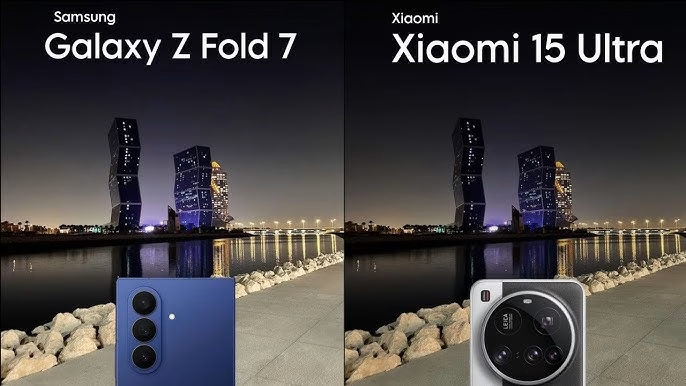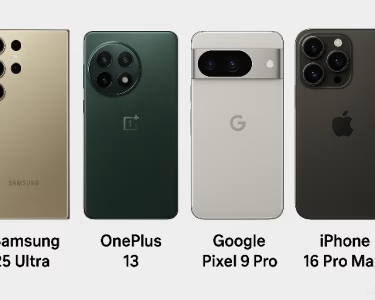Foldable vs Modular: Galaxy Z Fold 7 or Xiaomi’s Modular Camera Phone — What’s the Future of Smartphones?
Introduction: The Next Evolution of Smartphones
In 2025, smartphone design is entering a bold new chapter. Fold 7 vs modular phone has become a pivotal debate among tech fans, with Samsung’s Galaxy Z Fold 7 setting the stage for refined foldables, and Xiaomi unveiling a striking modular camera concept at MWC 2025. These innovations signal how future phones may blend form, function, and photography like never before.
Samsung Galaxy Z Fold 7: The Refined Foldable Standard
The Galaxy Z Fold 7 (launched July 9, 2025; available July 25 globally) is Samsung’s latest in foldable tech. It offers a sleek, ultra-thin design—just 4.2 mm when unfolded with a lighter build—housing expansive internal and external displays optimized for multitasking. (Android Central, TechRadar)
Powered by Qualcomm’s cutting-edge Snapdragon 8 Elite for Galaxy, paired with 12–16 GB RAM and up to 1 TB storage, the Fold 7 delivers flagship specs. Notably, it introduces a 200 MP main camera derived from the Galaxy S25 Ultra, plus new Galaxy AI with generative features like object removal and on-screen editing. (TechRadar, Wikipedia, Indiatimes)
Key Features:
- Displays: 8″ internal & 6.5″ cover, both high-res and foldable
- Build: Thinner, lighter body with reinforced hinge
- Cameras: 200 MP (wide), 10 MP telephoto/ultra-wide
- Software: Android 16, One UI 8, Galaxy AI optimizations
Xiaomi’s Modular Camera Phone Concept: Photography Meets Innovation
At MWC 2025, Xiaomi debuted a striking concept: a phone with a detachable 35 mm f/1.4 prime lens that uses magnetic LaserLink to draw power and transmit data seamlessly. (WIRED)
This module features a 100-MP Micro Four Thirds sensor, equipped with autofocus and a physical focus ring—bridging smartphone convenience with mirrorless camera quality. The concept offers RAW shooting, immersive imaging, and a more balanced design by removing bulky camera bumps. (WIRED, The Verge)
However, Xiaomi emphasizes this is still a concept—with no release timeline or price yet confirmed. (WIRED, LOS40)
Fold 7 vs Modular Phone: Feature-by-Feature Comparison
| Feature | Galaxy Z Fold 7 (Fold 7) | Xiaomi Modular Camera Concept |
|---|---|---|
| Form Factor | Book-style foldable; full smartphone experience | Standard smartphone with optional camera module |
| Innovation Focus | Display, AI, foldable durability | Camera flexibility, imaging performance |
| Cameras | 200 MP main + telephoto + ultra-wide | Detachable M4/3 sensor zoom lens |
| User Experience | Multitasking UI, AI tools, slim design | Modular attach/detach, manual focusing |
| Launch Status | Released in July 2025 | Concept only—no commercial release yet |
| Best For | All-around flagship needs | Photography enthusiasts and modular design fans |
What This Means for the Future of Smartphones
- Design Diversity: While foldable form factors like Fold 7 push interactive screen tech forward, modular concepts take aim at niche strengths like professional-grade photography without bulky build.
- User-Centric Choices: Some users will prefer versatile displays and AI multitasking—others may prioritize image quality and lens customizability.
- Hybrid Possibilities: A phone that merges foldable UX with modular enhancements could be next—imagine a Fold 7 with attachable pro-grade lenses…
- Market Viability: Samsung’s Fold 7 is real and market-ready. Xiaomi’s modular phone is inspirational but remains speculative. If executed well, modularity could reshape device ecosystems.
Which Should You Choose?
- For a complete flagship experience today? Go with the Galaxy Z Fold 7—full features, proven tech, and on-shelf availability.
- For camera innovation and future potential? Keep an eye on Xiaomi’s modular concept—for now, it’s a glimpse of what could be next in mobile imaging.
Final Thoughts
In the Fold 7 vs modular phone debate, Samsung currently leads the race in polished, all-purpose foldable smartphones. In contrast, Xiaomi’s concept highlights the growing appeal of camera modularity for serious photography. Each vision points to different strengths—but together, they help paint a clearer picture of what smartphones may become in the near future.




